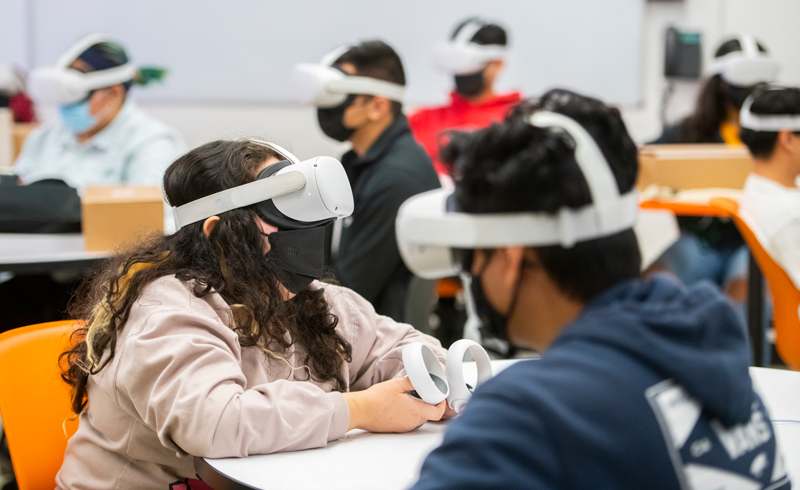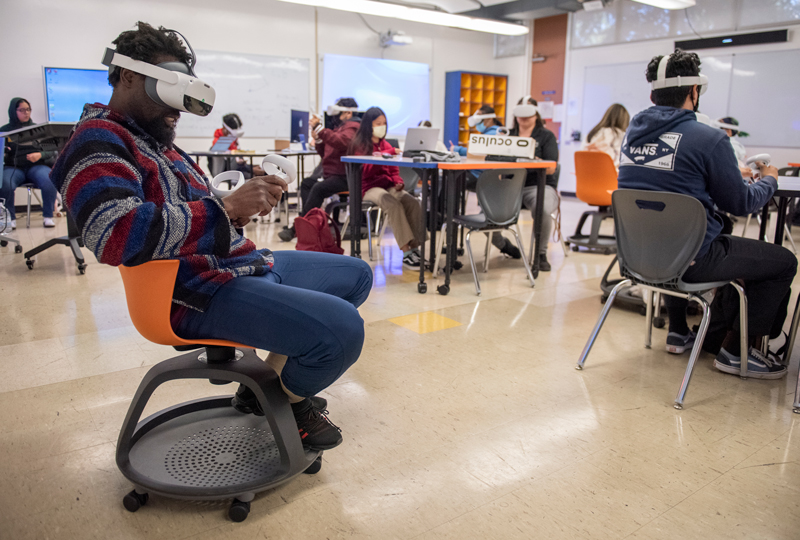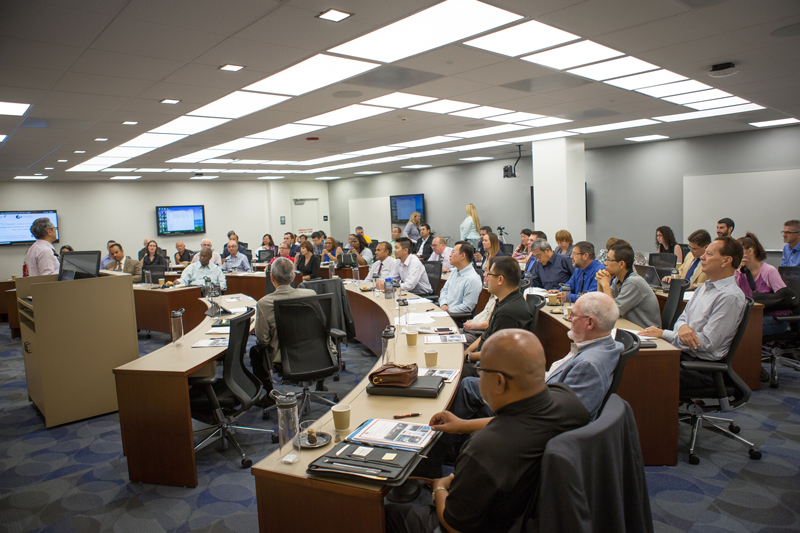Bringing A
Sense of Play to
Physics
Dr. Horace Crogman wants to transform traditional pedagogies and make learning physics fun again.
When Dr. Horace Crogman joined the faculty of CSUDH as assistant professor of physics in 2019, he did so with a mission to transform traditional pedagogies. “Why isn’t learning more fun? Too often, higher education kills our curiosity, and we lose the sense of wonder and curiosity we had as children.”
Crogman’s interest in math and physics began in his childhood on the Caribbean island of Antigua. His mother excelled in math and served as his first teacher, though her unorthodox approach set the tone for his own headstrong independence as a student at Princess Margaret School in St. John’s. “My mother taught me her way of doing math. This method would always confuse my teachers. I always got the right answers, but they couldn’t understand my process,” he said.
This independent spirit would come to define Crogman’s academic work in higher education, a journey that began in the panhandle of Texas. Midwestern State University had no physics department when he arrived in 1994. Three years later, he had his degree thanks to a partnership with other area schools and the creative use of early distance and online learning methods.

Crogman’s success earned him a full scholarship to the University of Arkansas, where he completed his MA (1999) and PhD (2004) before accepting a post-doc position at the Carnot de Bourgogne Interdisciplinary Laboratory in Dijon, France. That opportunity arose largely because of the freedom Crogman was granted as a graduate student to attend conferences, even when they were outside his specific area of study. “My advisor believed that if you’re going to be an effective physicist, you need to have a broad understanding of the field,” he said.
The two years he spent in Dijon allowed him to conduct important research in molecular physics. “My focus there was on the development of a model to better understand the high excitement state of tetrahedral molecules.” That research would later be published in 2007 in the European Physical Journal under the title “Local Modes of Silane within Stretching Vibrational Polyads.”
As an educator, Crogman maintains a keen interest in making the study of physics much more accessible to students from underrepresented communities. This is what initially attracted him to Dominguez Hills, a diverse campus where students have a passion not just for education but for the application of that learning to solve real-world problems.
“What good is physics if it has no application in the real world?” Crogman asks. “Physics is a subject that is supposed to help you learn how to think. If you learn how to think, then the problems you see in physics—and in the world—can be solved.”
For several years, Crogman headed a non-profit organization called the Institute for Effective Thinking. It served primarily as a mechanism to mentor students of color who were struggling in high school and had given up on the idea of pursuing higher education. Since his appointment to CSUDH, much of that work has now become a part of his efforts on campus.
“As educators, we don’t always do a good job of making connections with students,” says Crogman, who has reached out to the neighboring California Academy of Mathematics and Science (CAMS). In addition to running summer programs for students, he serves as an advisor for the school’s robotics club.
CAMS students have a wide range of college options once they graduate, Crogman says, but more of them are giving CSUDH a closer look. That has a great deal to do with his efforts to position the university as a major research center within the CSU system.

In his three years on campus, Crogman has worked tirelessly to attract funding for the implementation of new technology and pedagogical approaches. Successful grant applications have provided cutting-edge tools for his physics lab—the kind you would expect to find supporting PhD candidates at a much larger university.
“We have a ChemiDoc system for imaging proteins. We can do electrophoresis. We also have a Nikon confocal laser scanning microscopy imaging system,” says Crogman. He adds that the lab has attracted the interest of professors from UC Irvine and CSU Long Beach, among others.
The Fall 2022 semester also saw the advent of a new kind of physics class. Crogman secured a grant from the Department of Education to build and equip a virtual reality lab. Students taking Physics 130 now have the option of studying in a digital twin of the CSUDH campus created by the company VictoryXR.

Crogman is convinced that traditional approaches to higher education limit rather than expand opportunities for students. Rote learning, heavy homework loads, and the fear of failure all conspire to prevent them from properly appreciating the academic journey and assimilating the lessons they’re given.
“The key to effective learning is recapturing the sense of play that we had as children. Learning should not be a burden. It should create a sense of wonder, and that in turn feeds a commitment to lifelong learning.”


